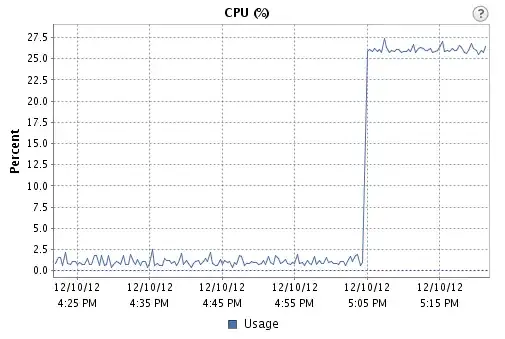Trying to plot CPU load on my server, with the following hardware: ProLiant DL360p Gen8 (same behavior on ProLiant DL360 G7).
The machine is running VMWare ESXi5.1
To create a CPU spike I run dd if=/dev/zero of=/dev/null, and I know the CPU is overloaded, because I can see a correlating spike in the graphs displayed on vCenter.

However, running this snmpwalk:
snmpwalk -v 1 -c ******** 192.168.MY_IP 1.3.6.1.2.1.25.3.3.1.2
Shows the following results:
iso.3.6.1.2.1.25.3.3.1.2.1 = INTEGER: 3
iso.3.6.1.2.1.25.3.3.1.2.2 = INTEGER: 2
iso.3.6.1.2.1.25.3.3.1.2.3 = INTEGER: 2
iso.3.6.1.2.1.25.3.3.1.2.4 = INTEGER: 3
Am I not looking into the right MIB? Should I be multiplying these by a constant?
By the way, using HP Agentless Monitoring I was able to get some cpu stats, but not what I'm looking for, at least nothing I could find wading through these MIBs.
